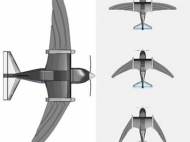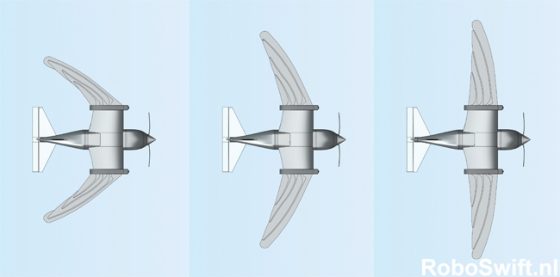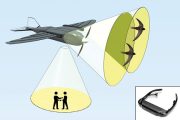It’s a bird, it’s a plane, it’s RoboSwift
 The students which made RoboSwift based the project on the findings of their supervisor, David Lentink of Wageningen University. In April 2007, with several co-authors he published a about the aerodynamic properties of the swift. During its lifetime, single swift flies a distance comparable to five roundtrips to the Moon and can remain in the air continuously for 7000 kilometers. Lentink and his associates discovered that the swift can fly so efficiently and maneuver so well because it continuously adapts the shape of its wings to the flying conditions.These large benefits are possible because the swift can very precisely adjust its feathers to the flight condition. It changes several parameters simultaneously during morphing, including wing sweep, wind area, the local curvature of the wing (airfoil camber) and the wing slenderness (aspect ratio).
The students which made RoboSwift based the project on the findings of their supervisor, David Lentink of Wageningen University. In April 2007, with several co-authors he published a about the aerodynamic properties of the swift. During its lifetime, single swift flies a distance comparable to five roundtrips to the Moon and can remain in the air continuously for 7000 kilometers. Lentink and his associates discovered that the swift can fly so efficiently and maneuver so well because it continuously adapts the shape of its wings to the flying conditions.These large benefits are possible because the swift can very precisely adjust its feathers to the flight condition. It changes several parameters simultaneously during morphing, including wing sweep, wind area, the local curvature of the wing (airfoil camber) and the wing slenderness (aspect ratio).
The RoboSwift is characterized by the continuously variable shape of its wings, known as ‘morphing’ wings, which are modeled on the wings of the swift. These wings make the aircraft, like its living model, very maneuverable and efficient. As a result, the RoboSwift is the first aircraft in the world to have the wing properties of living birds. Wind tunnel tests have shown that it can come remarkably close to the exceptional flying ability of the swift.
With a wingspan of approximately 50 cm and a weight of less than 100 g, the RoboSwift is a good deal smaller than standard model airplanes. To gain elevation, it is equipped with a very quiet electric motor with a propeller. The silhouette of the RoboSwift is similar to that of an actual swift, which makes it less noticeable than other observation aircraft and helicopters. The ‘pilot’ is now being trained in birdlike flying behavior, which will later include gliding flights. During gliding flights, the motor is turned off and the propeller folds up so the aircraft can fly even more quietly and save energy.
RoboSwift carries three mini-cameras. Two of them are used to look in front of the aircraft and one looks towards the ground. The two front looking cameras are used for video-piloting and display the image on a virtual-reality headset. These two cameras can be used for observing swifts when on a bioresearch mission. In the future the researchers hope to be able to observe wild birds from nearby without disturbing them by using birdlike aircraft such as the RoboSwift. This would allow new forms of biological research to be conducted.
The ground-looking camera is used for ground surveillance. This footage is displayed on a separate monitor. The footage of all three cameras is sent to ground via a wireless link, so ultrasmall video transmitters are also taken onboard of RoboSwift. The aircraft is designed to support ground personnel during a hostage scenario. Other civil observation applications can also be performed using this camera, such as crowd control during demonstrations, or tracking hooligans under the tense conditions of a football match. The Dutch police (KLPD) acknowledged the relevance of these possibilities and showed interest in further development of the system.
Unlike the common swift, RoboSwift does not propel itself by flapping its wings. To gain height between gliding flights, a propeller is used, that can fold back when power is turned off. This will reduce the drag incurred during glides.
RoboSwift is propelled by a very light electromotor. This motor is a brushless engine that produces more than 100 grams of thrust in combination with a propeller. The engine is controlled by an electronic speed control (ESC) that translates the commands that the pilot sends to the receiver into pulses that can drive the rotor. It takes its power from a two-cell Lithium Polymer battery.
The wings and body of the mechanical bird are made of carbon fiber composite, which is very light and very strong. Conveniently, it also gives the aircraft about the same color as the real bird. Moulds are used to fix the material in a streamlined shape.











Leave your response!